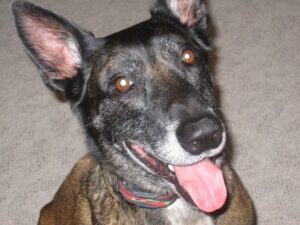
When choosing to use a remote collar for training your dog it is important to understand how to properly fit the collar.
Proper fit is one of the key factors in how well the collar is going to work during the training. A collar fitted correctly will have both contact points solidly touching the dog’s skin. Without a snug fit the collar may seem to work intermittently. This is because electricity only emits from one contact point, the other point is a ground. This configuration allows the static pulse to move across the arc from one point to the other. Without both points touching the dogs skin the arc can not be completed and therefore the dog feels nothing.
If the collar is placed on the dog when he is in a sitting or standing position make sure to check that it is still snug when he lowers his head. I often hear remarks that the dog ignores the stimulation when he is busy sniffing the ground. Frequently this is because the collar is too loose. When the dog lowers his head, the collar slips forward toward the ears and the contact points are no longer touching the skin. This can cause considerable training problems. The handler may feel it necessary to turn up the level (because the dog is not reacting) but then when the dog raises his head again (insuring contact) the level is startling to the dog. The simple fix is to make sure the collar is snug to begin with.
A snug fit means only one finger can fit in between the contact point and your dog’s skin. If the collar is too loose it will move around on the dog’s neck. This can cause chaffing and skin irritation due to the rubbing of the contact points.
One of the accessories I am really fond of are these collar straps that were specially designed to fit remote collar receivers. Not only are they attractive but once adjusted it only takes a snap to ensure the collar fits properly every time. Making sure the collar fits your dog correctly is the first step in good training.